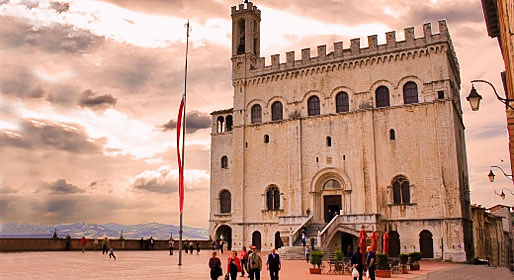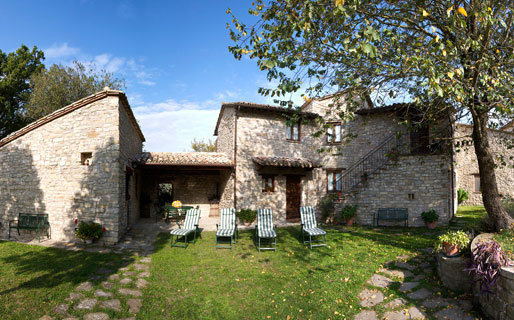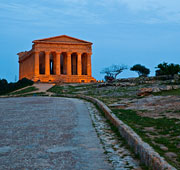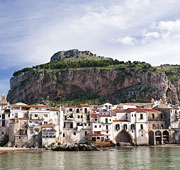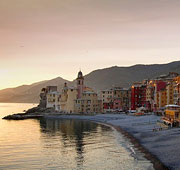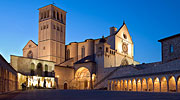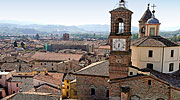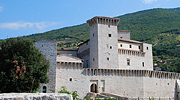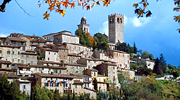In the steps of St Francis
Città di Castello, Assisi, Gubbio and the art of faith.
The journey starts in Umbria's most Northern town, Città di Castello, where modern and historic Italy combine.
Begin your visit in Piazza Garibaldi at the Palazzo Vitelle a Sant'Egidio, built in 1540. In the same Piazza, in the 15th century Palazzo Albizzini, there is an exhibition of work by the local artist, Alberto Burri (1914-95).
Masterpieces by Raphael, Luca Signorelli and other great artists are on display in the Pinocoteca Comunale, housed in Palazzo Vitelli Connoniera.
Don't forget your tablets
Gubbio has been described as one of the most beautiful medieval towns in Italy. Founded by the Umbrians and an important centre in the Roman era, the town was of strategic and artistic importance in medieval times.
The Eugubian Tablets, dating from 200BC and written in the Umbrian language can be seen in the Palazzo dei Priori
Other buildings to be visited include the majestic Palazzo dei Consoli, the Palazzo Pretorio and the Palazzo del Capitolo dei Canonici.
The great survivor
Foligno is one of those places that continues to flourish, against all odds. The residue of Foligno's medieval monuments are in the Piazza della Republica. The Duomo, with its two facades is the most impressive of the surviving buildings.
Foligno may have been badly bombed during the Second World War and severely damaged by the 1997 earthquake, but don't let this put you off visiting this fascinating little town
The Palazzo Comunale, the Palazzo del Podestà and the Palazzo Trinci, (in which there is an art museum) also remain. In the chapel of the Romanesque Church of Santa Maria Infraposta there is a Byzantine mural, which is of artistic importance.
Pretty in pink
Close to Foligno, on the slopes of Monte Subasio, lies the hill town of Spello, easily recognisable thanks to the distinctive pink color of its old stone buildings.
Whilst reminders of the town's Roman past can still be seen (for example the Augustan gateways in Spello's perimeter walls), the town center is mostly medieval.
Spello has more than its fair share of churches (apparently there were once a hundred). The most important of these is the 13th century Santa Maria Maggiore, which was frescoed by Pinturicchio in the 16th century. From the Belvedere at the top of the town you overlook a spectacular panorama with a view of the Roman amphitheatre.
Where saints are born
Assisi, St Francis' home town, attracts millions of tourists each year.
Much was destroyed in the 1997 earthquake, but much has been restored. The highlight of a visit has to be the Basilica di San Franscesco, St. Francis' burial place.
There are important medieval works of art to see, by Giotto, Cimabue and Simone Martini to name but a few. The city has many more treasures, connected to its history, from its beginnings as a Roman Municipium and also connected to Santa Chiara - St. Francis' first woman disciple and founder of the Poor Clares.

